Red Foxes
March 18, 2020
Red fox caught on trail camera at Mariton Wildlife Sanctuary
by Tim Burris, Preserve Manager. Photos by the “trail camera”.
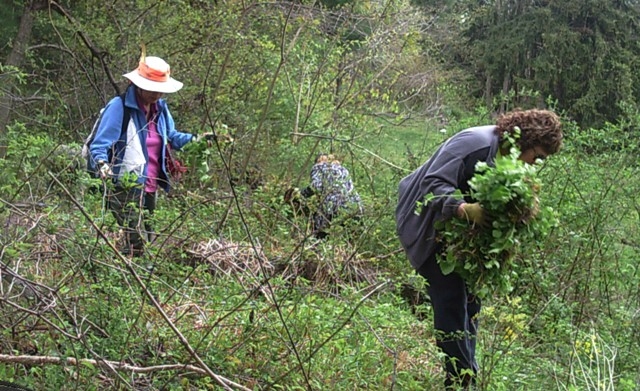
I cancelled the April Movie Night: Fox Tales as part of our Coronavirus response. Recently I checked the trail camera and had a lot of good photos of Red Foxes. So, I thought I would substitute the movie with a Field Note about Red Foxes using some trail camera photos. A lot of times the foxes are moving pretty quickly down the trail, so I have lots of blurred images.
While Red Foxes (Vulpes vulpes) are abundant, it is generally felt that they aren’t native to Pennsylvania. This belief is based on the lack of any Red Fox remains in Native American villages before European settlement. The middens of these villages provide a window into common species available to Native Americans, so the lack of Red Fox bones and skulls is a pretty good indicator that they didn’t live here (although they may have been in other parts of North America). It is believed that the Red Fox that we see now came from European stock brought over for hunting by English landowners.
Conversely, Gray Fox (Urocyon cinereoargenteus) bones are quite common in those Native American sites and the Gray Fox is considered Pennsylvania’s native fox. I’ll try not to digress too much about Gray Foxes, but when I first came to Mariton in 1992, Gray Foxes were very common, and I rarely saw Red Foxes. I haven’t seen a Gray Fox here in well over a decade. If you live in a rocky, forested area away from farmland, Gray Foxes may still be common.
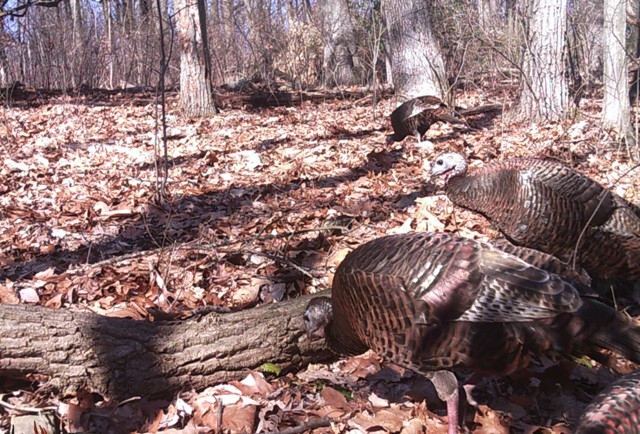
Red Foxes have many color variations, as you may see in these photos. I have seen Red Foxes that were colored almost completely gray. The two things to look for are a white-tipped tail and black stockings. Just a little white on the tail will distinguish a Red Fox from a Gray Fox. The black stockings can be harder to see in some color phases, but it is another indicator. Even the “red” can vary from orange to pink. They really are remarkable looking creatures.
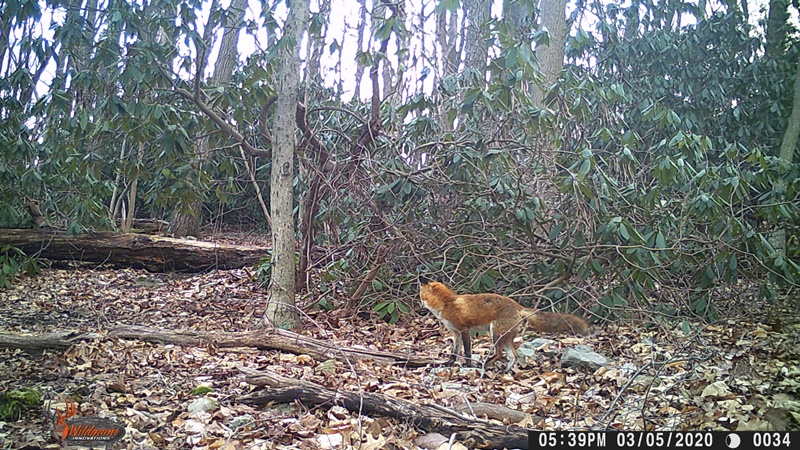
Like most canids, Red Foxes are opportunistic feeders. They eat their share of rodents and small animals, as well as bird eggs, snakes and frogs. During the last 17 Year Cicada cycle in 2004, every fox scat that I found was filled with Cicada shells. They also like fruit. When the cherries are ripe I find scat with cherry pits. Foxes often mark their territory by defecating on a small rise, so you’ll often see scat on a rock that may be only slightly above the rest of the trail.
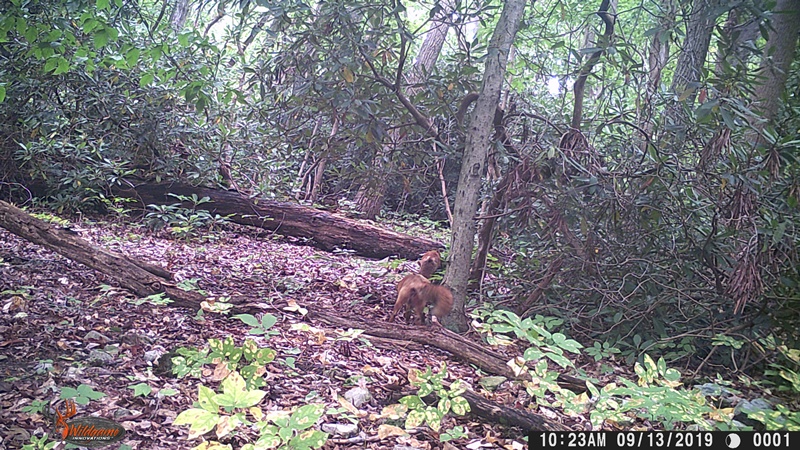
A rare shot: two foxes together.
Red Foxes mate for life. While the male doesn’t hang around the den when the kits are born, it isn’t an absentee father. The male brings food to the mother while she is occupied raising the young. When the young start exploring on their own, the male will also place food strategically to help the kits learn how to hunt. If the female dies, the male will move in to tend to the young. Once while sitting in a treestand, I watched a pair of Red Foxes with an interesting hunting strategy. First a fox moved along the hillside below me barking continuously. Even more strange, it made a lot noise by rustling leaves and breaking small branches. I watched as squirrels and birds fled up the hill in front of the noise. About ten minutes later another fox came by my treestand silently. It was about 20 yards up the hill from the first fox. I theorized that the second fox was taking advantage of any animals that were preoccupied with the noise of the first fox and might become easy prey.
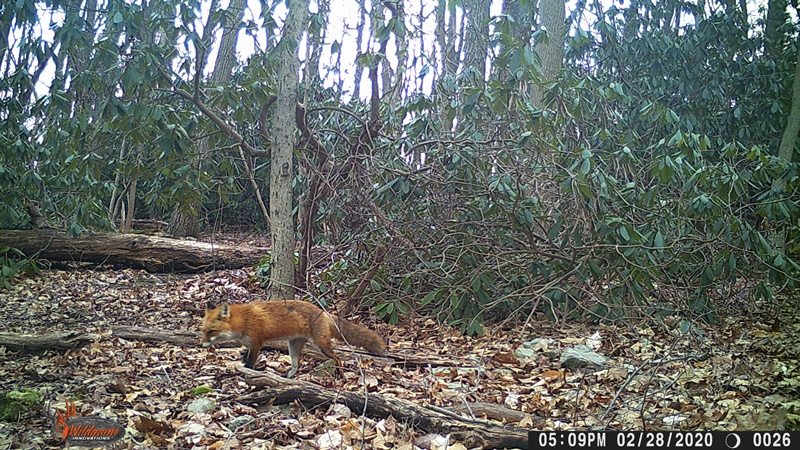
For many years, I watched Red Fox populations rise and fall. When the fox population got large, local foxes would often get mange or distemper and the population would crash. I haven’t seen that happening at Mariton of late. I think that coyotes (which prey on foxes) and cars have been regulating fox populations locally.
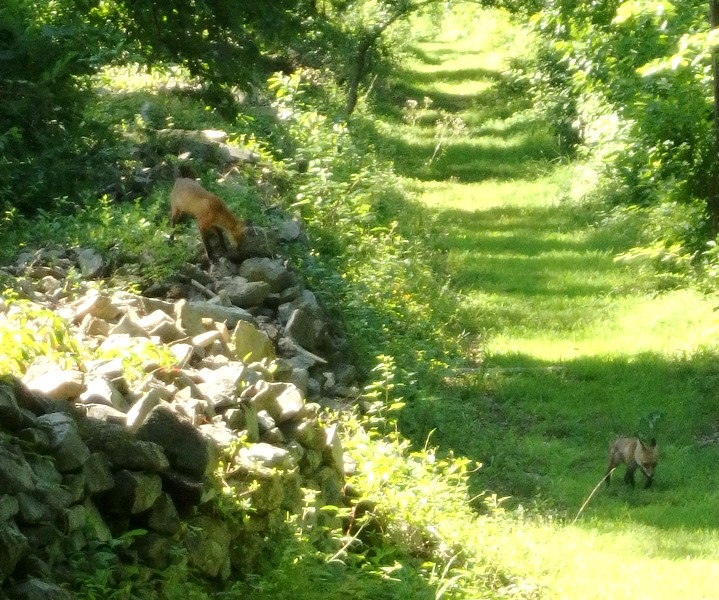
Fox kits on the Turnpike Trail. Photo by Tim Burris
Soon Red Fox kits will be venturing from their dens. In another month or so, their parents will be teaching them to hunt. Not everyone can stay still for long periods, but those that do often see more wildlife.
next post
Women In Conservation
March 10, 2020
In honor of International Women’s Day, we wanted to highlight some of the women who’ve carried the conservation movement from its infancy to today. Harriet […]
continue reading